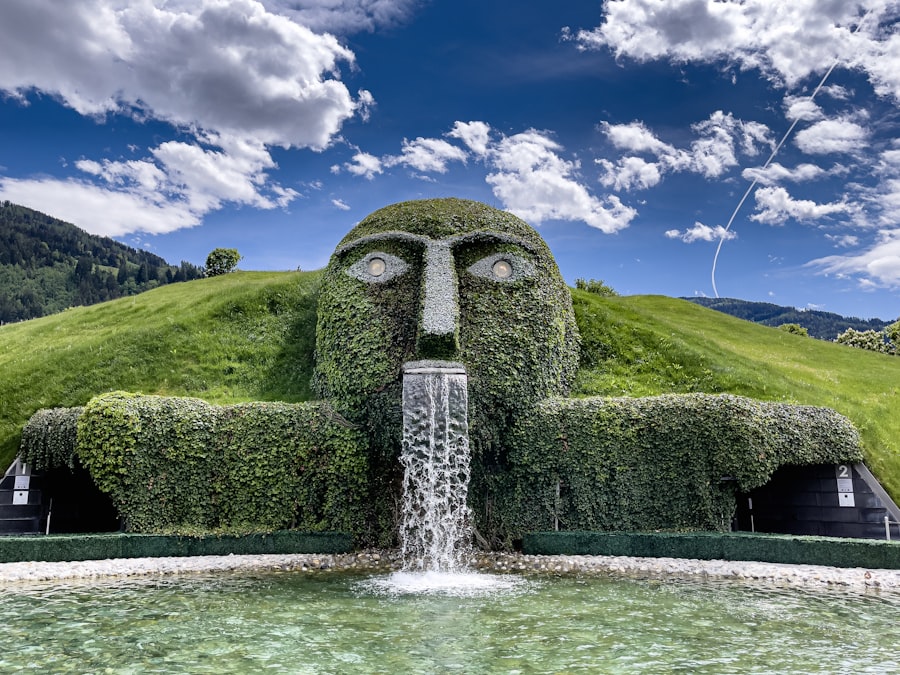Kaiju stories have long captivated audiences with their grand scale and imaginative narratives. Originating in Japan, the term “kaiju” translates to “strange beast,” and it encompasses a wide range of gigantic creatures that often wreak havoc on cities and engage in epic battles. These tales are not merely about destruction; they delve into themes of humanity, nature, and the consequences of our actions.
As you explore the world of kaiju, you’ll find that these stories resonate on multiple levels, offering both thrilling entertainment and profound commentary on society. The allure of kaiju stories lies in their ability to blend the fantastical with the relatable. You can see reflections of your own fears and hopes in these colossal beings, whether they are portrayed as mindless monsters or misunderstood entities.
The genre has evolved over the decades, but its core remains the same: a fascination with the unknown and a desire to confront the larger-than-life challenges that life presents. As you dive deeper into this genre, you’ll discover how it has influenced modern cinema, particularly in films like “Pacific Rim,” which pays homage to its predecessors while carving out its own unique identity.
Key Takeaways
- Kaiju stories are a popular genre in Japanese culture, featuring giant monsters wreaking havoc on cities.
- Classic Kaiju films like Godzilla and King Kong heavily influenced the creation of Pacific Rim, a modern take on the genre.
- Pacific Rim evolved the Kaiju by introducing new designs and abilities, making them more visually stunning and formidable.
- The visual aesthetics of Kaiju in Pacific Rim are a combination of CGI and practical effects, creating a sense of scale and realism.
- The Jaegers in Pacific Rim play a crucial role in defending humanity against the Kaiju, showcasing the human element in the story.
The Influence of Classic Kaiju on Pacific Rim
When you think of classic kaiju films, titles like “Godzilla” and “Mothra” likely come to mind. These iconic creatures set the stage for what kaiju stories could achieve, blending horror, science fiction, and social commentary. “Pacific Rim” draws heavily from this rich history, paying tribute to the giants that came before while introducing new elements that resonate with contemporary audiences.
The film captures the essence of classic kaiju by showcasing titanic battles between monsters and the human struggle to survive in a world where nature’s fury is unleashed. In “Pacific Rim,” you can see the direct influence of these classic films in the design and characterization of its kaiju. Each creature is imbued with a sense of personality and purpose, reminiscent of the way Godzilla was portrayed as both a destroyer and a protector.
The film’s kaiju are not just mindless beasts; they are products of their environment, driven by instinct and a primal need to assert dominance. This complexity adds depth to the narrative, allowing you to engage with the monsters on a more emotional level, much like audiences did with their classic counterparts.
The Evolution of Kaiju in Pacific Rim

As you watch “Pacific Rim,” you’ll notice how it represents a significant evolution in the portrayal of kaiju. While traditional films often depicted these creatures as solitary threats, “Pacific Rim” introduces a new layer by presenting them as part of a larger ecosystem. The kaiju are not just random occurrences; they are part of a coordinated attack from another dimension, which adds an intriguing twist to their existence.
This shift reflects a modern understanding of interconnectedness and chaos, making the narrative feel more relevant to today’s audience. Moreover, the evolution of kaiju in “Pacific Rim” is also evident in their design and abilities. The film showcases a diverse array of creatures, each with unique traits that challenge the human characters in different ways.
From towering behemoths to agile predators, these kaiju push the boundaries of imagination while remaining grounded in a sense of realism. This evolution not only enhances the visual spectacle but also enriches the storytelling, allowing you to appreciate the complexity of each encounter between humans and monsters.
The Visual Aesthetics of Kaiju in Pacific Rim
| Aspect | Metric |
|---|---|
| Color Palette | Vibrant and contrasting colors |
| Texture | Detailed and realistic skin textures |
| Size | Massive and imposing presence |
| Design | Unique and intricate creature designs |
| Motion | Fluid and powerful movement |
The visual aesthetics of kaiju in “Pacific Rim” are nothing short of breathtaking. As you immerse yourself in the film, you’ll be struck by the meticulous attention to detail in the design of each creature. The filmmakers have crafted these monsters with a blend of realism and artistry that brings them to life on screen.
From their textured skin to their imposing size, every aspect is designed to evoke awe and fear simultaneously. This careful craftsmanship allows you to feel the weight of each kaiju as they clash against cities and each other. In addition to their design, the cinematography plays a crucial role in how you perceive these colossal beings.
The film employs dynamic camera angles and sweeping shots that emphasize the scale of the kaiju against human structures. You can almost feel the ground shake beneath your feet as these titans battle it out. The use of color and lighting further enhances the visual experience, creating an atmosphere that is both thrilling and foreboding.
This combination of artistry and technology elevates “Pacific Rim” beyond mere spectacle; it becomes an immersive experience that resonates deeply with viewers.
The Role of Jaegers in Pacific Rim
In contrast to the kaiju, “Pacific Rim” introduces Jaegers—massive robots piloted by humans designed specifically to combat these monstrous threats. As you delve into the film, you’ll find that Jaegers serve not only as weapons but also as symbols of human ingenuity and resilience. Each Jaeger is a testament to humanity’s determination to fight back against overwhelming odds, embodying themes of teamwork and sacrifice.
The pilots must synchronize their minds and bodies to operate these machines effectively, reflecting the importance of collaboration in overcoming challenges. The relationship between humans and Jaegers adds another layer to the narrative. You witness characters forming deep connections with their machines, treating them almost as extensions of themselves.
This bond highlights the emotional stakes involved in their battles against kaiju. As you watch these pilots face their fears and confront their pasts, you become invested in their journeys, rooting for them not just as warriors but as individuals striving for survival and redemption.
Homage to Classic Kaiju Storytelling in Pacific Rim

“Pacific Rim” stands as a love letter to classic kaiju storytelling while simultaneously forging its own path within the genre. You can see this homage reflected in various elements throughout the film—from its narrative structure to its character archetypes. The film embraces familiar tropes such as the scientist seeking answers, the military leaders strategizing against an impending threat, and even the reluctant hero who must rise to the occasion.
These archetypes resonate with fans of classic kaiju films, evoking nostalgia while also providing fresh perspectives. Moreover, “Pacific Rim” incorporates iconic moments reminiscent of classic kaiju battles. The film pays tribute to legendary showdowns by crafting epic fight sequences that echo those found in earlier works.
You’ll find yourself drawn into these confrontations, feeling the weight of history behind each clash between Jaeger and kaiju. This blend of homage and innovation creates a rich tapestry that honors its predecessors while inviting new audiences into the fold.
The Impact of Pacific Rim on Kaiju Genre
The release of “Pacific Rim” marked a significant turning point for the kaiju genre, reinvigorating interest in these colossal creatures on a global scale. As you reflect on its impact, it becomes clear that the film not only celebrated classic kaiju but also introduced new ideas that would influence future works within the genre. Its success demonstrated that there was still an appetite for giant monster stories, paving the way for other filmmakers to explore similar themes and narratives.
Furthermore, “Pacific Rim” expanded the audience for kaiju films beyond traditional fans. By blending action-packed sequences with heartfelt character development, it appealed to a broader demographic—drawing in viewers who may not have previously engaged with this genre. This shift has led to a resurgence of interest in kaiju stories across various media platforms, from animated series to video games, ensuring that these legendary creatures continue to capture imaginations for years to come.
The Legacy of Kaiju Stories in Pacific Rim
As you conclude your exploration of “Pacific Rim,” it becomes evident that its legacy within the kaiju genre is profound and lasting. The film not only honors its predecessors but also redefines what kaiju stories can achieve in modern cinema. By blending thrilling action with emotional depth, it has set a new standard for how these narratives can be told—one that resonates with both longtime fans and newcomers alike.
The legacy of kaiju stories is one of resilience, creativity, and connection—qualities that “Pacific Rim” embodies wholeheartedly. As you reflect on this journey through towering monsters and heroic pilots, you’ll find that these tales continue to inspire us to confront our fears and embrace our humanity in the face of overwhelming odds. In doing so, “Pacific Rim” ensures that kaiju stories will remain an integral part of our cultural landscape for generations to come.
